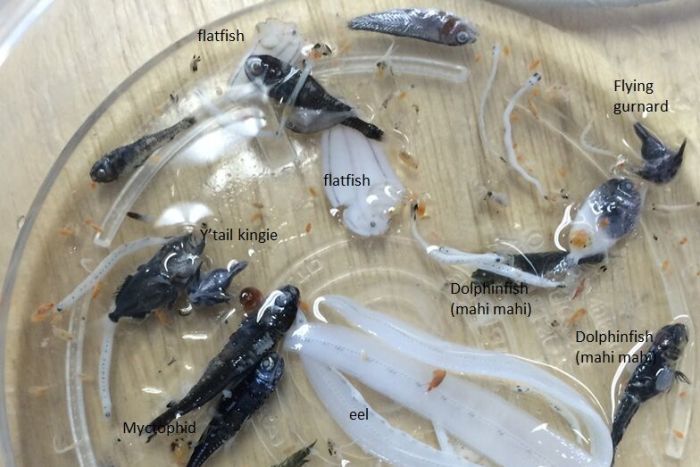
Australian researchers on the CSIRO's new research ship RV Investigator, have discovered eddies spinning off the Eastern Australian Current, that are providing a haven for young fish.
"Previously researchers thought fish only developed in coastal estuaries, but these huge cauldrons of nutrient rich cold water, welling up from the deep, are full of baby fish scooped up or carried along from the coast."
Professor Iain Suthers, from the Sydney Institute of Marine Science, said the research on marine eddies shows a whole new way of understanding the early life of fish.
"These things last for two to three weeks which is just the right window for larval fish to grow up, get its fins, get its eyes, and then swim back to the coast and settle into an estuary," he said.
"We were really amazed by this. "This is not in the text books, it's not in the papers, and it's probably a principle that applies to all currents, all coasts around the world."
The research team also discovered massive under water canyons, including the North Solitary Island Canyon, the biggest on the eastern seaboard.
Professor Suthers said the canyons act as a conduit for the creation of the eddies and these patterns are probably being repeated around the world.
"These things are found throughout the coastal oceans."
He said eddies are often hidden below a layer of warm water and researchers thought these offshore eddies with their coastal water became "death traps".
However, he said, they realise now that the baby fish that end up in the eddies are often the lucky ones.
"Just that 10 metres below the surface was this huge cauldron of water rotating at a metre per second," he said.
"It was keeping the community nurtured because of the uplift and the cooler temperature.
"The cold water with its fertilizer, the phytoplankton, the algae at this site, it was so distinctive."
Researchers think only one in one million spawned fish survive, but those in the eddies might be doing better.
See full story
